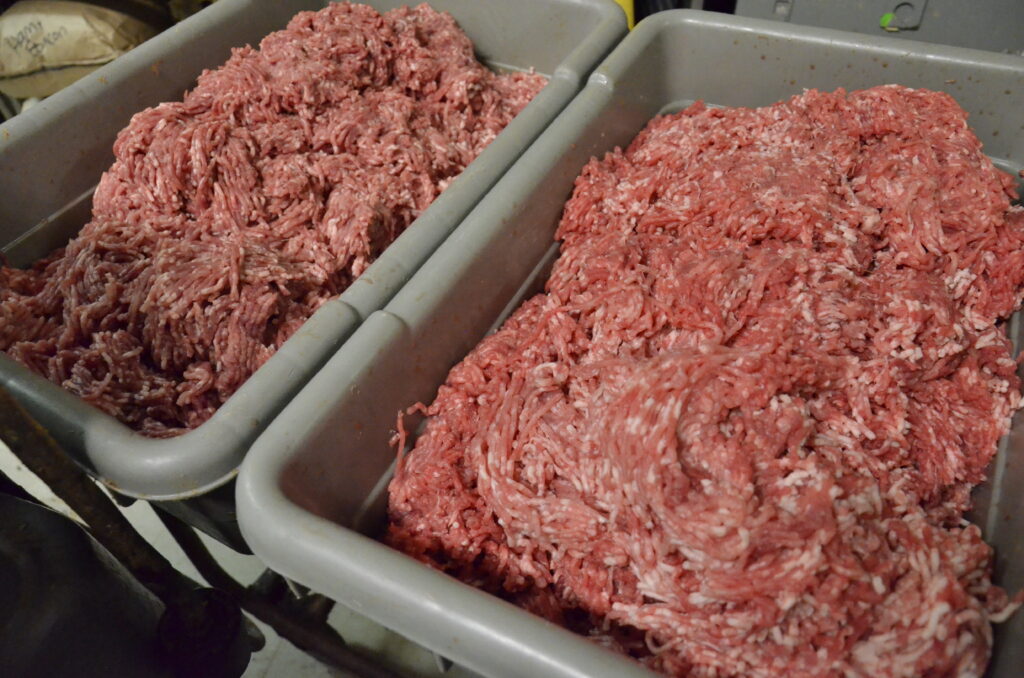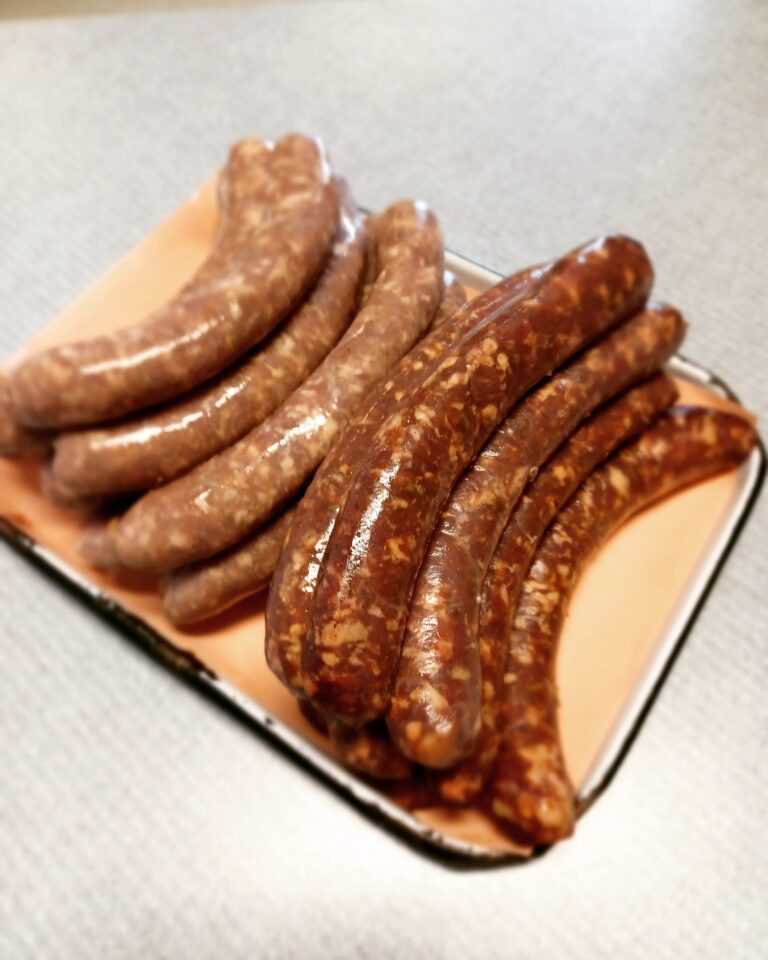I’ve learned a lot in the 50-plus years I’ve been making sausage. Most of it I learned from my Father who learned the trade in Germany. Things have changed a bit since then. Each year I learn a new tip or trick, a bit more about the science of meat, how to get a better bind, and what to add to prevent discoloration.
This is a simple article meant to guide you on the basics of sausage making. Understand that making sausage is a process, one you will not perfect the first time out.

Meat Selection
When selecting your meat for sausage-making, it’s important to pick the right cut. Pork shoulder is usually a good choice as it has a good balance of fat and lean meat, which helps keep your sausages juicy and flavorful. However, if you want something a bit more indulgent, try using pork belly or bacon. For an even richer flavor, use combinations of different meats like pork and beef or chicken and lamb.

Fat
Sausage almost always has pork fat in it. The best fat is Pork backfat, off the back of the hog. Due to its higher melting point and availability. You can also use Belly Fat or Pork Shoulder meat is a nice compromise.
Deer or Beef fat will work, but not poultry as it’s too soft. And never use previously rendered fats like Lard, they won’t work.
Tip: The ratio of Meat to fat is also important we stick to a ratio of 80% meat to 20% fat.
Salt
Adding salt to your sausage prevents spoilage, helps the meat proteins bind together during cooking to improve product texture, and makes the sausage taste better.
It’s best to add your salt by weight. One would typically add 1 – 2 percent of salt, by the total weight of the meat. For a 5kg recipe, one would then add a minimum of 50 grams of salt.
Did you know? The word sausage itself comes from Latin, meaning “salted”.
Grinding and Stuffing
When it comes to making sausages, there are two crucial steps: grinding and stuffing. Grinding the meat allows for a smooth and even texture. This step is essential for creating a well-rounded flavor profile. You can grind once for a coarser grind or twice for a finer sausage. If you are just starting out and don’t have a small grinder at home, most local butcher shops will be happy to grind the meat for you.
Once the meat has been ground, it’s time for the stuffing. This step requires a little finesse, as the casings need to be filled evenly and tightly. But don’t worry, with a little practice, it becomes second nature. Some things to watch out for are air pockets. If you get some, don’t despair, using a sausage pricker or other sharp object, simply poke the air pocket.
Tip: Natural casings are preserved in salt, simply ring out the casing in a bucket of clean water and rinse out the casing.
Making homemade sausage is a rewarding experience and can be really fun! With careful planning, attention to detail, good quality ingredients, and the right tools, you’re guaranteed of delicious and well-seasoned sausages. Plus, there’s something special about knowing that your culinary creations came from your own kitchen. Don’t forget that variations on the recipes are allowed; get creative with different flavors and herbs to make your sausage stand out! Experiment and find the perfect blend for you. So if you are up for a challenge in making delicious sausages yourself – now go ahead and try it out! Was this helpful? Let me know in the comments.
